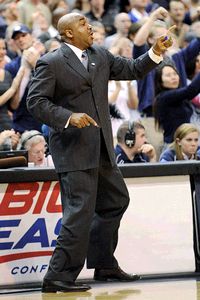 Now that Gilbert Arenas is a free man, he has put a stranglehold on the title of 'Worst Contract in the NBA', and Wizards fans must suffer through 5 years of being in 'fan jail'. While Gil is likely ecstatic that he miraculously avoided being locked in a cell, he is now going to hold the Wizards and their fans for the next 5 years in a place I like to call 'not in the playoffs'. This experience will be nothing new to us Bullets fans, but just because you've been kicked in the balls before, doesn't mean it won't hurt getting kicked again.
Now that Gilbert Arenas is a free man, he has put a stranglehold on the title of 'Worst Contract in the NBA', and Wizards fans must suffer through 5 years of being in 'fan jail'. While Gil is likely ecstatic that he miraculously avoided being locked in a cell, he is now going to hold the Wizards and their fans for the next 5 years in a place I like to call 'not in the playoffs'. This experience will be nothing new to us Bullets fans, but just because you've been kicked in the balls before, doesn't mean it won't hurt getting kicked again.Don't get me wrong, I still support the rebuilding process while Gil is here, because it will at least give us a shot at an elite player in the draft and allow us to develop some young players - I just can't wait until the day we are free of the contract and fully move forward.
I think we should all basically try to pretend Gil doesn't exist. Even though I realize Gil plays the same position as the #1 prospect in the draft, don't tell me I'm the only one who played espn.com's lottery+mock draft at least 27 times to get the Wiz to 'win' John Wall (but maybe I'm the only one who printed that screen and put it on my wall.......framed....).
In the meantime, the only excitement we are getting will be during the draft lottery (which, given my lack of success with the espn.com simulator, already looks like a night of drinking myself into a stupor). We can also at least hope for some new Agent Zero antics in the form of Six Shooter, like dumps in teammates' shoes; a wise man once told me, pooping in sneakers is always funny. I am now dreaming of a Wiz team comprised of Six Shooter, Young Sushi, and Josh Howard, for pure entertainment sake, as well as John Wall.......as long as Six Shooter keeps his guns and turds away from our prized possession.
(Image courtesy of media.nj.com)











